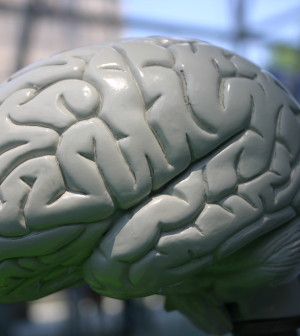- Skip Storing This Everyday Product in the Fridge Door
- Green Tea + B3 Pairing May Boost Brain Health
- Navigating Your Midlife Crisis: Embracing New Possibilities
- City Raccoons Showing Signs of Domestication
- Mapping the Exposome: Science Broadens Focus to Environmental Disease Triggers
- One Week Less on Social Media Linked to Better Mental Health
- Your Brain Changes in Stages as You Age, Study Finds
- Some Suicide Victims Show No Typical Warning Signs, Study Finds
- ByHeart Formula Faces Lawsuits After Babies Sickened With Botulism
- Switch to Vegan Diet Could Cut Your Greenhouse Gas Emissions in Half
Fine Muscle Control May Continue Developing Into Teen Years


FRIDAY, Sept. 27Children’s development of fine motor control continues longer than previously believed and isn’t exclusively linked to brain development, according to two new studies.
Fine motor control refers to the ability to make slight, precise movements, such as using the fingers to pick up and handle small objects. It had been believed that improvements in fine motor control continued only until ages 8 to 10. But researchers found that this development can continue until age 16.
This means that there is a longer length of time to use therapy to improve the motor-control skills of children with neurodevelopmental disorders such as cerebral palsy.
“These findings show that it’s not only possible but critical to continue or begin physical therapy in adolescence,” Francisco Valero-Cuevas, a professor of biomedical engineering at the University of Southern California, said in a university news release.
Valero-Cuevas was the corresponding author of both studies, one of which will appear Oct. 1 in the Journal of Neurophysiology and the other Sept. 18 in the Journal of Neuroscience.
“We find we likely do not have a narrow window of opportunity in early childhood to improve manipulation skills, as previously believed, but rather developmental plasticity lasts much longer and provides opportunity throughout adolescence,” said Valero-Cuevas, who also is a professor of biokinesiology and physical therapy. “This complements similarly exciting findings showing brain plasticity in adulthood and old age.”
Valero-Cuevas invented a tool that allows for more precise measurement of fine motor control. The tool uses springs of varying stiffness and length that are set between plastic pads. A person’s fine motor control is determined by the ability to compress the increasingly awkward spring devices.
The new tool was used to test 130 children, aged 4 to 16, with typical development of fine motor control. The tests revealed that even 16-year-olds were continuing to hone this skill.
The researchers also found that this ability was tied not just to brain maturation, but also to a child’s muscular development.
More information
The U.S. National Library of Medicine has more about fine motor control.
Source: HealthDay
Copyright © 2025 HealthDay. All rights reserved.










